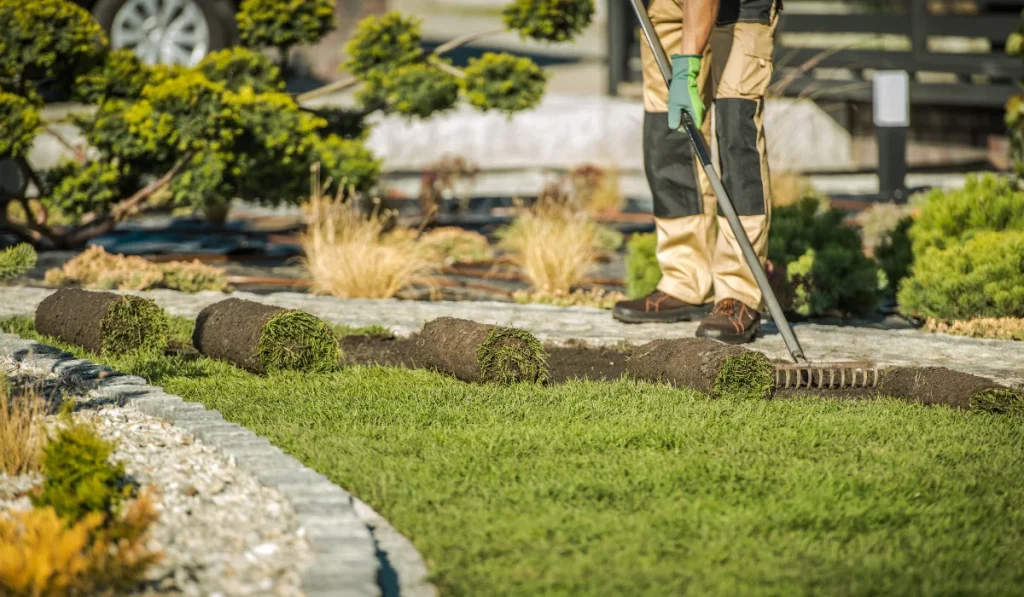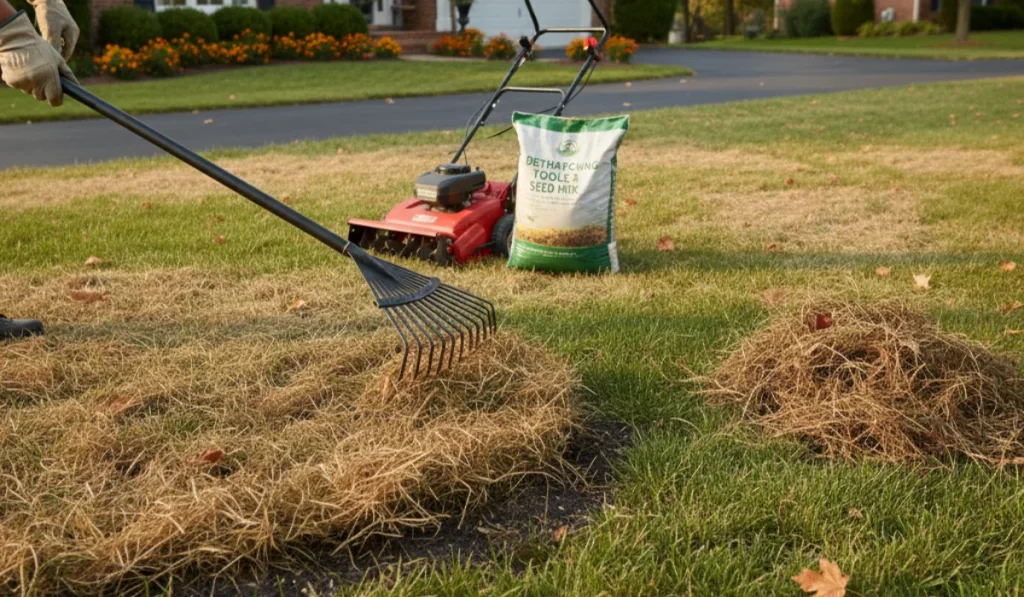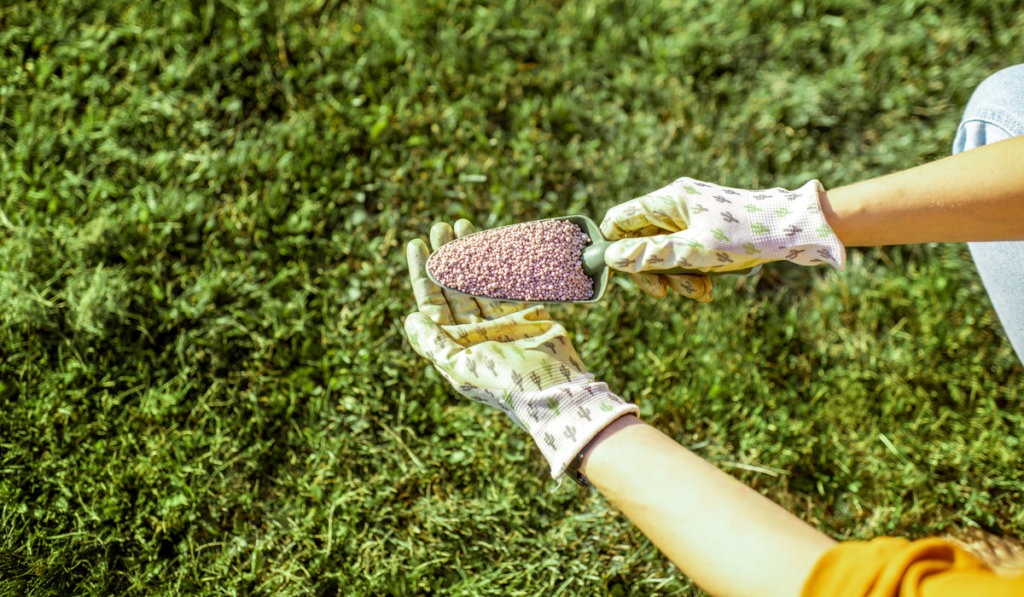Ever wondered why your St. Augustine grass isn’t thriving like your neighbor’s? Knowing the best time to plant St. Augustine grass can be a game-changer for your lawn’s health and appearance.
When is the perfect season to plant this grass variety? Read on to find out the optimal planting times and get insider tips for a lush, green lawn.
Key Takeaways
- The best time to plant St. Augustine grass is early spring or summer when the soil is warm enough above 55°F.
- Deep and regular watering helps the grass develop strong roots and stay healthy, especially during hot months.
- Fertilizing 3-4 times a year with the right nutrients keeps the grass green and resilient.
- Regular mowing at a height of 2.5 to 4 inches helps maintain a thick and healthy lawn.
The Best Season to Plant St. Augustine Grass
Planting St. Augustine grass at the right time ensures its healthy growth and establishment. As homeowners, consider these recommendations for different times of the year to get the best results.
Spring
Spring is an opportune time to plant St. Augustine grass. As temperatures rise, the turfgrass emerges from dormancy and starts its growing season. Early spring temperatures can help the plugs or sod establish roots before the heat of summer sets in.
As the season progresses, late spring offers warmer soil temperatures for root development. To ensure the best results when planting in the spring, follow these guidelines:
| Spring Planting Guide | Details |
|---|---|
| Soil Temperature | Avoid planting if the temperature is not consistently above 55°F |
| Watering Needs | Deep water once a week to encourage deep root growth. |
| Weed Control | Apply a pre-emergent herbicide to prevent competition from weeds like crabgrass. |
Summer
Summer planting benefits warm-season grasses like St. Augustine grass due to the warm soil conditions. Early summer is especially ideal because the grass will have enough time to establish itself before the extreme heat.
In midsummer, extra care must be taken to ensure the grass does not dry out. The key points for summer planting include:
| Summer Planting Guide | Details |
|---|---|
| Fertilization | Apply potassium- and nitrogen-based fertilizer lightly to promote growth. |
| Watering Needs | Increase frequency, typically 2-3 times weekly, to counteract the heat. |
| Shade Management | Provide partial shading to reduce the stress on the young grass. |
Fall
Fall can be a good time for planting St. Augustine grass, especially in regions with mild winters. The cooler temperatures can reduce stress on the new grass, allowing it to establish roots before going dormant.
Early fall is better than late fall to avoid planting too close to the winter months. Consider these tips for fall planting:
| Fall Planting Guide | Details |
|---|---|
| Soil Preparation | Aerate the soil to improve oxygen flow and root penetration. |
| Watering Needs | Gradually reduce the watering frequency as temperatures drop. |
| Disease Management | Check for fungal diseases and apply fungicides when necessary. |
Factors to Consider When Planting St. Augustine Grass
Rainfall
Rainfall is crucial for the healthy growth of St. Augustine grass, which thrives with steady moisture. These conditions influence the ideal planting times in areas like California, Florida, and Texas.
Proper rainfall keeps the soil moist, aiding the establishment of new grass seeds or sprigs. It benefits from receiving 1 to 2 inches of water per week for optimal growth.
Soil Temperature
The temperature of any soil type is critical in determining the right time to plant St. Augustine grass. Like Zoysia, a warm-season grass, it flourishes when six to eight inches of soil is warm enough to promote active growth.
The ideal range for planting this type of grass is between 70 and 80°F. Typically, late spring or early summer is the best time to plant, as soil temperatures have warmed sufficiently by then.
Daylight Hours
Daylight hours directly impact the growth rate and health of St. Augustine grass. This grass type needs full sun to thrive but also exhibits moderate shade tolerance. It performs best with at least six hours of direct sunlight daily.
Unlike fescue, which has a higher cold tolerance, the optimal time for St. Augustine is late spring or early summer, when the days are longer. This allows the grass to enjoy sunlight most during its initial growth phases.
Lawn Care Tips After Planting St. Augustine Grass
While St. Augustine grass is generally considered a low-maintenance type, it still requires more than basic lawn care to remain lush year-round.
Watering
Watering is crucial for the development and health of a St. Augustine sod. New lawns require frequent watering to help establish deep roots, which support the grass during dry periods.
To achieve the best results, use a deep and infrequent watering approach. This encourages the root system to grow deeper, enhancing the grass’s resilience.
Fertilization
Fertilizing helps provide the nutrients necessary for a lush, green color. St. Augustine grass benefits from regular feeding with potassium- and nitrogen-heavy fertilizers.
Apply a balanced fertilizer 3-4 times a year, starting in the spring and ending in early fall. During summer, use a high-nitrogen fertilizer to encourage rapid growth and recovery from heat stress.
For a more detailed approach, use a soil test to determine specific nutrient needs and adjust accordingly. Proper fertilization fosters strong stolons and healthy grass blades.
Mowing
Mowing maintains the aesthetic and health of your St. Augustine grass lawn. So, it’s crucial to mow at the correct mowing height, typically between 1 ½ to 2 ½ inches with a rotary mower.
Regular mowing also helps control weed growth and encourages a dense turf. Set the mower blades high to avoid cutting off too many leaf blades at once.



